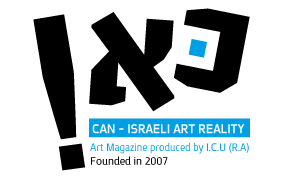What's Hiding Behind the Date?
These words were written during the first days of the Israel-Iran War, that broke out on the night of Friday, the 13th. This date is considered an unlucky day in the Gregorian calendar, portending bad omens. We all hope that the bad luck is reserved to our enemy, the one that has conspired to destroy us since 1979, when the Iranian Revolution took place, leading to the expulsion of the Shah from the country and the rise of the spiritual leader Ruhollah Khomeini.
The bad luck and danger of Friday the 13th are expressed in various art forms. The world of cinema, the world of music (Metal), and the world of literature have embraced this date with great intensity. In cinema and television, iconic horror film series emerged as early as the 1980s, and will undoubtedly continue for many more years. In literature and comics, the influence of this date is evident in posters, covers, video clips, and an art style based on horror and suspense.
In the art world, symbols and motifs associated with bad luck (black cat, ladders, broken mirrors) are used, combined with supernatural elements like curses, demons, and spells – in direct connection to Friday the 13th.
Since the night of June 13, 2025, history is being written before our eyes, together with the long war in Gaza that began on October 10, 2023. The cannons roar, planes bomb, missiles are fired, threats are incessant – and the muses are not silent, as if these are parallel worlds. On one hand – the world of reality, starring hostages, soldiers, demonstrations, violence, sirens. War. On the other hand – the world of art, where fears and anxieties are expressed.
War exposes people to violence, suffering, loss, and fear – experiences that shake the artist's inner world. In many cases, artists process trauma through art, leading to powerful and emotionally charged works. For example, Pablo Picasso created "Guernica" following the Nazi bombing of the city of Guernica during the Spanish Civil War. The work expresses a cry against the horrors of war.
Another example: Futurist art in Italy at the beginning of the 20th century idolized war, but after World War I, the artistic approach changed to an anti-war stance, for instance in the Dada movement.
And another interesting fact. During or after a war, many artists change their visual language: a shift to darker colors, use of aggressive lines, chaotic compositions, surrealistic or expressionistic expressions.
Art can also serve as a protest against war or a documentation of traumatic events. For example, Otto Dix, a German artist who fought in World War I, depicted the horrors of battle in very realistic, sometimes horrifying, paintings.
And here with us, Banksy, the anonymous street artist, created murals in conflict zones (like the West Bank and Gaza), depicting children playing near soldiers, or doves with bulletproof vests – a quiet yet sharp critique of the normalization of violence.
Awaiting the dove of peace, carrying an olive branch in its mouth!
Dear readers, due to the 12-day war, and following the reopening of cultural institutions, there has been a slight delay in the production of the current issue, for which we apologize.
Yoram Mark-Reich, Culture Editor
|
|
|
|
|
|
| Can artmagazine |
|
|
|
| New magazine |
|
|
| New book |
|
|
| Published Books |
|
|
|
| |
|
|
|





